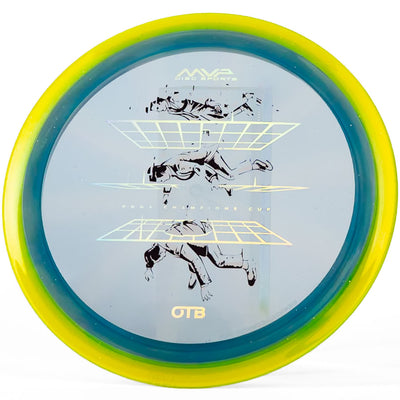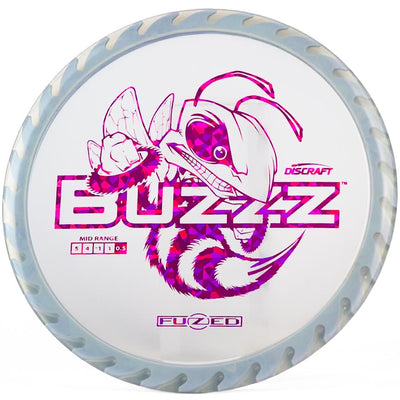Discraft Raptor vs Predator: Driver Review

With their aerodynamic body, slim profile, comfortable rims, and ability to hit high speeds, overstable disc golf drivers are a must-have for every disc golf player.
Today, we're going to focus on reviewing two similar Discraft distance drivers: the Discraft Raptor vs Predator.
Here's The Bottom Line:
- The Raptor is an overstable driver that can be relied on cutting through headwinds and will stay comfortable in the hand for both forehand and backhand throws.
- The Predator is an extremely overstable driver that has a consistent harder fade, little turn, and is a hyzer flip machine.
Dimensions
Here's the breakdown of these two drivers:
Raptor: 21.3cm diameter, 1.9cm height, 1.9cm rim width, 1.1 cm rim depth. Max weight is 175g.
Predator: 21.2 cm diameter, 1.9cm height, 1.9cm rim width, 1.1cm rim depth. Max weight is 177g.
With the Raptor being marginally larger than the Predator and everything else clocking in at the same measurements, how different can these drivers be?
Discraft Predator vs Raptor: Differences
With a stability rating of 2.1, the Raptor's flight numbers are 9 | 4 | 0 | 3. The Predator comes in at 9 | 4 | 1 | 4 with a stability rating of 2.5. If you take a look at the flight chart comparison, you can see that the Predator will fade to the left a bit harder at the end of its flight path than the Raptor, true to its numbers.

The Raptor's fade is gentler, making it a good choice if you're trying to finesse a particular shot.
While both discs will accomplish a similar flight, the Raptor was made to exhibit zero turn- the Predator has a turn rating of 1, although it's debatable. Even though the Predator sits close to the Raptor on a stability chart, there are other major differences.
It's worth mentioning that the Predator has also been around for a long time (and has a following), whereas the Raptor is still relatively new. Think of the Predator as the industry staple, and the Raptor as an emerging young gun on the scene. Pros like Paul Ulibarri, however, have been quickly popularizing the Raptor as well.
Rim Feel
Let's talk rims. Regardless of how you prefer to grip your discs, comfort is key.
Both of the Predator's inner and outer rims are pretty sharp- some have said the bottom wing feels almost like a microbead. You may notice some friction with forehand shots, but the shallow rim will still give you a clean release. For backhand throws, it's not super noticeable.

Then again, some prefer the Predator's sharp rim. Again, feel is something we can't necessarily teach you, but danged if we won't pore over every descriptive detail!
For most, the Raptor may be more comfortable in the hand. The bottom edge of the Raptor's rim has been described as lip-like, clean, and moderate.
So, even though the shallow rim of the Raptor is technically the same size as the Predator, it just comes to show you how much the little things matter.
Debated Physical Shape
It shouldn't have to be said, but as most of you know, varying runs can affect the look and feel of your disc. Some end up perfectly flat, and somebody else the next state over could order the same one and describe it as a pop-top.
At times we have received really domey Raptors and a flat top Predators, and other times it has been the exact opposite. It all comes down to the run.
If you get to handle and compare these two discs in-store, look for a flat top if you can!
Windy Conditions
With both of these being overstable, they will both cut through the wind pretty easily. What we've found is the Predator is a bit beefier than the Raptor and fares better with oncoming headwinds given that the appropriate form and power are there to back it up.
It'll be especially useful if you need a consistently hard left fade at the end of its flight.
Now some disc golfers do prefer the Raptor when it comes to windy weather. It has that signature overstable flight but not extremely so. Even a lightweight Raptor will be pretty stable and cut through the air like butter.
Overall, the general opinion is that the Raptor is slightly more workable than the Predator. Predators will give you huge distance on those flex shots or a laser straight flight with that consistent fade.
You can rely more on the Raptor to carve out a variety of lines and shots out on the course.
Overall Similarities
Both would be great options for someone looking to fill the overstable 9-speed slot between a Fairway Driver and a Distance Driver.
If you're facing some strong headwind or windy conditions in general, you can rely on both of these discs.
Both of these drivers are better suited to intermediate to advanced players, as beginners or those with weaker arms may find the overstability of both the Raptor and Predator to be frustrating.
Both of these have a wide appeal for backhand and forehand shots, but it depends on your preference and skill.

Available Plastics
Discraft Predator Plastics
Do note: since the Predator mold has been around since 2002, there have been limited runs with some of these Discraft plastics listed below. You can currently find consistent stocks of the Z, ESP, and FLX lines at various online retailers.
Z: Ultra-hard plastic with extreme durability and good grip. Will start out super overstable but breaks in nicely.
ESP: Launched in 2006, this premium-grade plastic has great grip, a tacky feel, and good flexibility. It's a highly durable blend with beautiful swirls of color.
ESP FLX: This special version of ESP has heightened flexibility due to the addition of a soft polymer and boasts multicolored swirly effects.
Z FLX: Even more flexible than ESP, considered a gummy premium grade and popular for cold weather play.
Ti: The premium Titanium blend came out in 2012 and has been super popular since then. It gives you the durability of Z with the big grippiness of ESP and extreme durability.
Discraft Raptor Plastics
The first run of the Raptor is the brainchild between Paul Ulibarri and the R&D team at Discraft. This disc was approved by PDGA in December 2018.
The Raptor can be found in ESP (Tour Series), Z (first run), Big Z, and ESP FLX (Tour Series). Here's a tasty Metallic Z Raptor from our inventory. (You're welcome.)
FAQ's:
What's the difference between a fairway driver and a distance driver?
Because all distance drivers have a higher potential for traveling farther, they require more arm speed- whereas fairway drivers are suited to shorter drives, requiring less power to go further. Just typically not as far as a max distance driver can.
Physically speaking, fairway drivers will have smaller rims for more control. Drivers will have sharper noses and wider rims, which are not typically suited for beginner players.
How do I choose a good fairway driver?
It's not only about choosing a fairway driver in the best speed rating (for your abilities), but it should also feel comfortable and smooth in the hand because fairway drivers will most likely be your workhorse.
What are other discs similar to the Raptor?
The Innova Firebird, Axiom Fireball, Lat 64 Primitus, and the Kastaplast Stal are similar to the Raptor.
What are other discs similar to the Predator?
Infinite Discs Scepter, Legacy Discs Enemy, and the Innova Monster are similar to the Predator.
No matter what level you're at, or which disc golf brands you're loyal to, you can't go wrong with having a workhorse fairway driver in your bag. The benefits are endless- beginners can use them as a learning tool to build confidence, and pros can win World Champions with them. Just get one that feels good to you.
Check out our selection of tasty Discraft discs here, and bag yourself something rad for the new year.
More Disc Reviews:
Innova Thunderbird vs Firebird
Understable vs Overstable Discs













